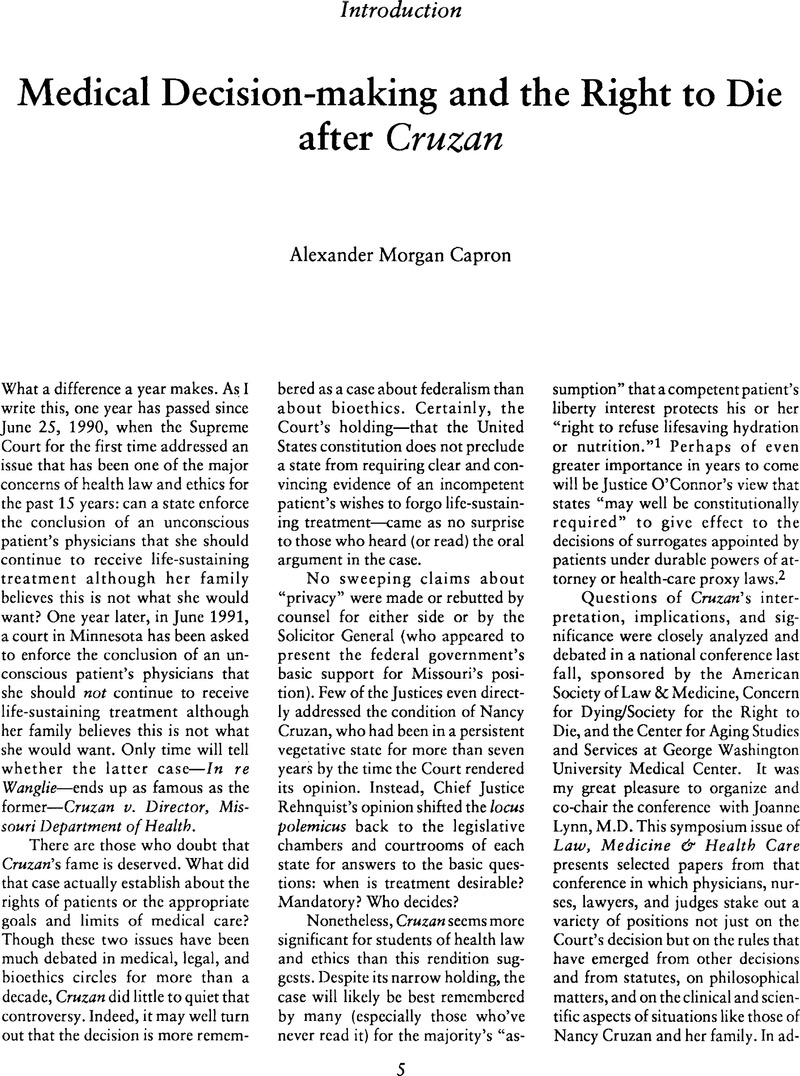Crossref Citations
This article has been cited by the following publications. This list is generated based on data provided by Crossref.
Swisher, Karen N.
and
Berriman, Grey S.
1993.
Case law update.
Journal of Healthcare Risk Management,
Vol. 13,
Issue. 1,
p.
37.
Mendez, Omar E.
1993.
Death in America: A Clinician’s Perspective.
Critical Care Clinics,
Vol. 9,
Issue. 3,
p.
613.



